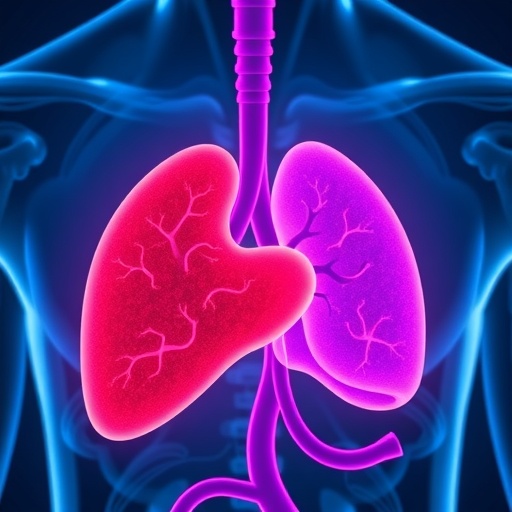In the ever-evolving landscape of transplant medicine, the challenge of optimizing immunosuppressive therapy remains pivotal for patient outcomes. A groundbreaking phase 2 randomized clinical trial, recently published in Nature Communications, brings to the forefront a transformative approach to tacrolimus dosing in liver transplant recipients, leveraging phenotypic personalized medicine to refine and potentially revolutionize post-transplant care.
Tacrolimus, a cornerstone immunosuppressant used to prevent organ rejection, presents a narrow therapeutic index, with significant variability in pharmacokinetics and pharmacodynamics among individuals. This variability often necessitates meticulous and frequent dose adjustments to mitigate risks such as graft rejection or drug toxicity. Traditional dosing protocols rely heavily on population-based averages, which may inadequately account for patient-specific factors influencing drug metabolism and response.
The study spearheaded by Khong, Lee, Warren, and collaborators addresses this critical gap by employing phenotypic markers to tailor tacrolimus dosing. Phenotypic personalized medicine here refers to assessing measurable biological characteristics—such as enzyme activity levels, drug metabolite profiles, and immunological parameters—that offer real-time insight into an individual patient’s drug disposition and immune status. Incorporating these phenotypes facilitates a more precise dosing strategy that transcends the current “one-size-fits-most” paradigm.
In this rigorous randomized controlled trial, liver transplant recipients were assigned to either standard dosing protocols or a phenotypic-guided dosing arm. The phenotypic approach integrated biomarker assessments, including cytochrome P450 3A5 (CYP3A5) enzyme genotyping and metabolic activity assays, alongside immune function assays, to dynamically modulate tacrolimus doses. This methodology harnesses advances in molecular diagnostics and immunology to personalize therapy in a clinically meaningful manner.
One of the pivotal findings of this phase 2 trial was the enhanced stability of tacrolimus blood concentrations among patients receiving phenotypic-guided dosing. This stability is clinically significant because it reduces the incidence of subtherapeutic exposure that predisposes patients to rejection episodes as well as supratherapeutic levels that contribute to nephrotoxicity and other adverse events. The phenotypic approach demonstrated a notable reduction in dose adjustments and outpatient visits for therapeutic drug monitoring, underscoring its potential to improve healthcare efficiency.
Moreover, the trial revealed that phenotypic dosing correlated with a lower incidence of acute rejection during the critical early post-transplant period, hinting at improved immunological control through optimized drug exposure. This is remarkable given how early graft rejection substantially affects long-term transplant success and patient survival. By finely tuning immunosuppression, phenotypic-guided protocols may strike a better immunological balance, preserving graft function without overtreatment.
This study’s strength lies in its multidisciplinary integration of pharmacogenomics, pharmacokinetics, and immunophenotyping, highlighting the convergence of these fields to tailor therapy on an individual basis. Importantly, the researchers utilized advanced bioanalytical techniques to capture dynamic phenotypic data, which required sophisticated laboratory infrastructure and clinical expertise. These developments mark a significant step toward precision medicine in transplantation, a field that has long lagged behind oncology and other areas in personalized approaches.
The implications extend beyond liver transplantation. Tacrolimus remains a mainstay for kidney, heart, and lung transplants, where similar pharmacologic challenges persist. If phenotypic personalized dosing proves robust across organ types and larger cohorts, it could herald a new era of immunosuppressive management, potentially decreasing morbidity, improving graft longevity, and reducing healthcare costs.
The study also underscores the evolving role of machine learning and computational modeling in transplant pharmacology. The integration of phenotypic data can feed into predictive algorithms that anticipate an individual’s response to tacrolimus, adapting doses preemptively rather than reactively. This proactive dosing paradigm could revolutionize clinical workflows, transforming tacrolimus management into a dynamic, data-informed practice rather than a static protocol-driven one.
However, certain challenges remain before widespread clinical adoption. The need for specialized assays and the cost of phenotyping may limit immediate accessibility, particularly in resource-constrained settings. Additionally, the complexity of transplant immunology means phenotypic personalization may never be fully predictive; hence, clinical judgment remains indispensable. Long-term studies are necessary to validate the durability of benefits concerning graft survival and patient quality of life.
Furthermore, this trial paves the way for exploring additional biomarkers that could refine immunosuppressive regimens. Beyond CYP3A5 and metabolite monitoring, inflammatory cytokines, immune cell subset profiling, and even microbiome interactions might emerge as influential factors governing tacrolimus response. Such multidimensional phenotyping could further enhance individualized therapy, aligning with the larger precision medicine movement sweeping through healthcare.
Another fascinating aspect is the psychosocial and patient engagement angle. Personalized dosing strategies inherently require close communication between patients and clinicians, fostering collaborative care models. Patients empowered with knowledge about their unique drug response characteristics may exhibit improved adherence and satisfaction, factors which are crucial for the success of long-term therapies vital in transplantation.
This investigation into phenotypic dosing also challenges the regulatory and logistical frameworks governing transplant pharmacotherapy. Integrating innovative diagnostic tools into clinical practice demands updates to guidelines, reimbursement policies, and practitioner education. Stakeholders including transplant centers, laboratories, and policymakers must collaborate to create environments conducive to adopting personalized immunosuppression strategies.
In summary, Khong and colleagues’ landmark phase 2 clinical trial introduces a compelling vision for tacrolimus dosing in liver transplant recipients by harnessing phenotypic personalized medicine. Their work elucidates the potential for improved drug exposure stability, reduced rejection risk, and enhanced patient care through individualized therapeutic regimens grounded in deep biological insight. This approach embodies the future of transplantation, where precision and personalization are not aspirational but integral components of clinical practice, offering hope for enhanced transplant success in the years ahead.
Subject of Research: Tacrolimus dosing optimization in liver transplant recipients using phenotypic personalized medicine.
Article Title: Tacrolimus dosing in liver transplant recipients using phenotypic personalized medicine: A phase 2 randomized clinical trial.
Article References:
Khong, J., Lee, M., Warren, C. et al. Tacrolimus dosing in liver transplant recipients using phenotypic personalized medicine: A phase 2 randomized clinical trial. Nat Commun 16, 4558 (2025). https://doi.org/10.1038/s41467-025-59739-6
Image Credits: AI Generated
Tags: drug metabolism variabilityenzyme activity assessmentgraft rejection preventionimmunosuppressive therapy optimizationindividualized medication strategiesliver transplant outcomespersonalized tacrolimus dosingpharmacokinetics and pharmacodynamicsphase 2 randomized clinical trialphenotypic personalized medicinereal-time drug disposition monitoringtransplant patient care advancements





